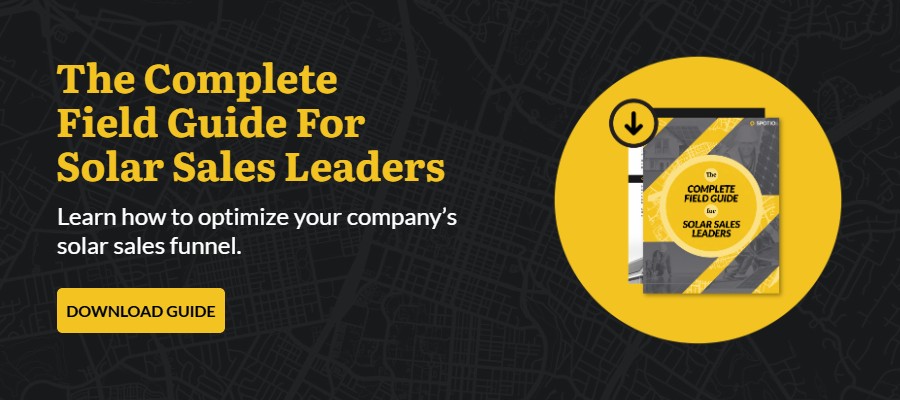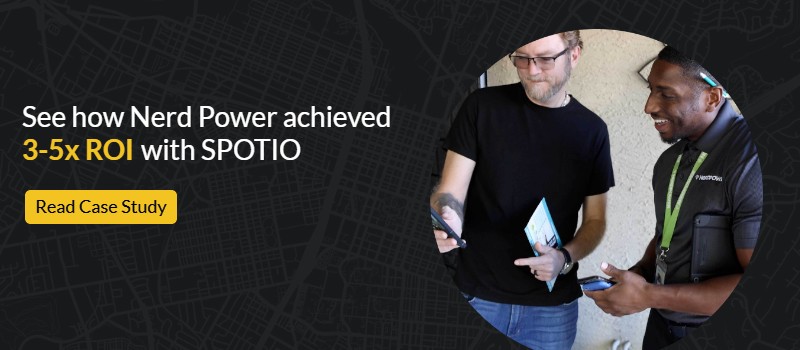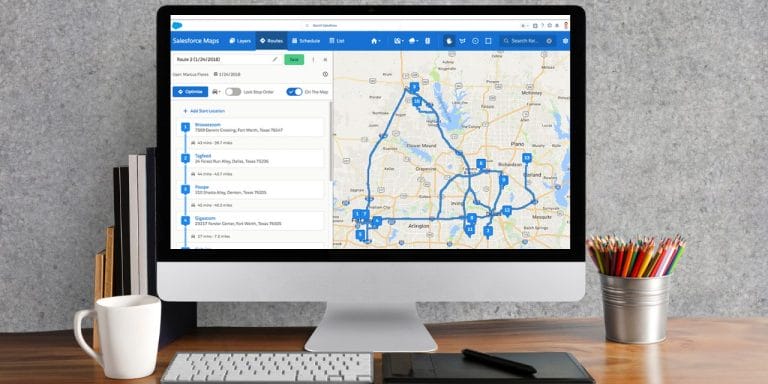Looking to boost solar sales for your company? You’ve come to the right place!
In this article, we’ll explain why solar sales are on the rise, the challenges of selling solar panels in 2022, and 14 best practices to help you close more deals right now.
We have a lot to get to, so let’s dive in and get started!
Why are solar sales on the rise
There’s no doubt about it: solar energy is more popular today than at any other point in human history. The question is, why? There are a few reasons:
- Customers: The average solar customer is unique. Sure, they want to save money on their electricity bill. But many of them want to produce clean energy, too, and support the planet. Solar gives them this opportunity.
- Affordability: New technology makes solar energy more affordable to everyday folks like you and me. In fact, the cost of large-scale solar projects has plunged by 85% in the last decade, thanks to advances in the space.
- Legislation: Finally, governmental commitments have helped the solar industry grow. As of this writing, 38 states in the U.S. offer solar incentives. The goal? To stimulate interest in this kind of energy.
It’s not hard to see why solar energy has become so popular in recent years. But that doesn’t mean that solar companies are walking down easy street. There are numerous challenges that said companies must overcome to find success.
The challenge for solar companies
As mentioned, solar sales are on the rise, which means there’s an incredible opportunity for solar companies (like yours!) to boost sales.
But, as in every industry, incredible opportunities often lead to stiff competition. Put simply, everyone wants a piece of the solar pie and is willing to fight tooth and nail to get it. This is a challenge that your company must overcome.
Here’s another challenge: the average sales cycle in the solar industry is 8.9 months. That’s a long time—much longer than it takes to sell a car or enterprise-level software, even though these things often cost much more.
Because of this, successful solar sales reps need to have an intimate understanding of the solar sales funnel. That way they can guide prospects through it faster.
Let’s talk more about that…
Key stages in the solar sales funnel
Solar sales is a numbers game.
Generally speaking, the more prospects your reps talk to, the more deals they’ll close. But you can streamline the entire sales process by optimizing your solar sales funnel. To do that, you first need to understand the five key stages, outlined below.
Prospecting
The prospecting stage is when solar sales reps identify potential customers to contact. The key to success at this point is qualification.
Here’s the hard truth: not everyone wants to buy solar panels from you. Some people will want solar, but won’t be able to afford it. Others will be interested, but own properties that don’t receive enough sunlight to operate panels.
To sell solar, you need to find prospects who want to invest in the technology, and have the ability to do so, both financially and geographically speaking.
Connecting
Once your reps have built up lists of potential leads, they need to reach out to them. This is known as the connecting stage of the solar sales funnel.
It’s important to remember that the goal at this stage of the sales process is not to make sales. It’s to set appointments. Once an appointment is set, reps will be able to expound on the benefits of solar and attempt to close a deal.
It’s worth pointing out that prospects forget about appointments all of the time. We suggest investing in some kind of appointment reminder app for your solar selling team. Doing so can reduce no-shows by 10% – 15%!
Considering
The considering stage of the solar sales funnel includes your reps’ pitches to prospects, follow-up procedures, and everything else that goes into making sales.
Every one of your reps’ pitches should answer three questions:
- Why does solar make sense for this particular prospect?
- Why should our company be the one to sell them solar panels?
- Why should this specific prospect invest in solar right now, not tomorrow?
If your reps can answer these three questions in an adequate manner, they’ll be well on their way to closing deals. After that, they’ll just need to send eye-catching proposals, follow-up on a regular basis, and make it easy for prospects to say, “yes”.
Decision
Your reps have met with the prospect and answered all of their questions. Said prospect has now entered the decision stage of the solar sales funnel.
Unfortunately, this is often where deals stall or fall through. Sometimes it’s because the prospect can’t secure financing. Other times it’s because a trusted advisor (their real estate agent, for example) tells them not to install solar panels.
To ensure prospects sign on the dotted line, you need to stay focused, hammer home the benefits of your solar systems, and simplify the process when possible.
Post-win
Selling solar panels is the goal, but it’s not the end. Just because a prospect agrees to make a purchase doesn’t mean you can drop them like a hot potato.
The fifth and final stage of the solar sales process is known as post-win. This is when sales reps check in with new customers to make sure the installation process is smooth and painless. Failing to do this could result in expensive change orders.
Following-up with new customers will also give you the chance to ask for referrals. This is important because solar leads can cost hundreds of dollars to secure. Referrals, on the other hand, are completely free. Win!
Solar sales best practices
Let’s recap:
So far, we’ve talked about why solar sales are on the rise and the challenges you’ll face when selling solar in 2022 and beyond. We also covered the key stages in the solar sales funnel so that you can, hopefully, guide prospects through them faster.
Now, let’s talk about a few solar sales best practices you can use to supercharge your department’s workflows. If you implement a few of these, selling solar panels will get a whole lot easier—we guarantee it!
Start with your Ideal Customer Profile (ICP)
Who are you selling solar to? If you don’t know the answer to this question, you’ll struggle to find customers, close deals, and achieve success.
So, before you do anything else, pinpoint your ideal customer. Then create an ideal customer profile, often referred to as an ICP, to distribute to your reps.
Your ICP should include information about the person (or company, if you sell solar panels to commercial clients) you want to sell to, including their geographical location, their financial situation, and the specific problems you’ll help them solve.
Use ICP data to find qualified prospects
Once you’ve created an ICP, you can use it in your prospecting efforts.
This is the key to finding qualified prospects who actually want to invest in the solar panels you sell. Just make sure you look for four key pieces of information:
- Home Ownership: Only talk to folks who own their homes.
- Home Value: Spend extra time with people who own big, expensive houses, as these homes will use more electricity than smaller ones.
- Credit Score: Focus on prospects who have the financial ability to buy solar panels from you. Their credit score will be a good indicator.
- Location: Center your efforts on the people who live in locations that can accommodate solar panels. Strike all others from your leads list.
SPOTIO makes it easy to find qualified leads thanks to its impressive sales intelligence technology, which will enable you to filter through 200+ data points and pinpoint potential buyers that meet all of your ICP criteria.
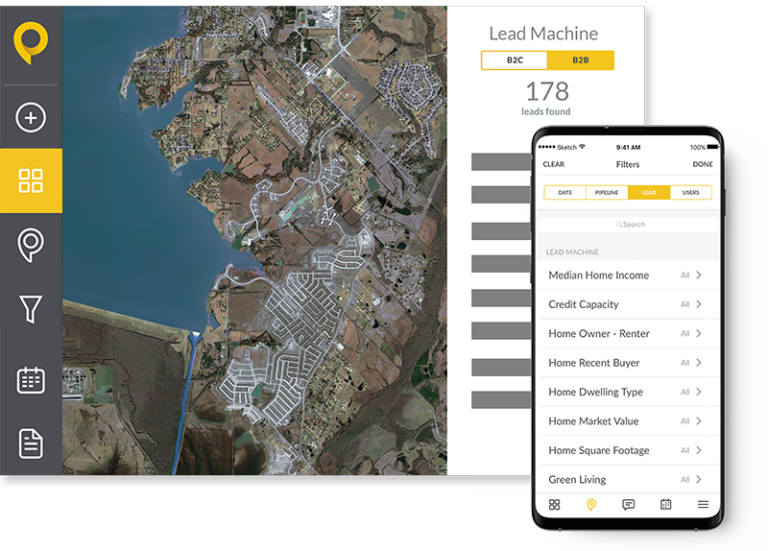
Get crystal clear on what you’re selling
Always remember: your reps aren’t meeting with prospects to educate them on how solar panels work. They’re meeting with prospects to explain how your company’s solar panels will solve the energy-related problems they experience.
In other words, reps need to focus on the money prospects can save, the additional value solar panels lend to houses, the environmental impacts of solar energy, etc.
These are the things your company sells. Make sure this is crystal clear before you send reps to meet with potential customers. Trust us, selling solar will become much easier once you and your team internalize this fact.
Prepare your solar sales pitch
Success in solar sales requires a rock-solid pitch.
As mentioned above, the best solar sales pitches answer three questions. 1) Why should the prospect invest in solar? 2) Why should the prospect buy from your company? 3) And why should the prospect buy right now, not later?
Here are a few more tips to make sure your reps nail their pitches:
- Use Data and Visuals: Data and visuals make the benefits of solar come alive. Use them and watch your sales skyrocket.
- Tell Customer Stories: Customer stories build trust. Prospects will think, “Well, if it helped that guy, why won’t it help me, too?”
- Create a Sense of Urgency: Make prospects want to buy now by telling them about the changing nature of incentives, the continual rise in energy prices, and other true facts that may help them make a buying decision.
Set minimum daily sales activities
At the end of the day, you can’t force people to buy solar panels from you.
You can, however, make sure that your reps send emails, make phone calls, and otherwise follow-up with potential buyers in a consistent and timely manner.
Set minimum daily sales activities for each of the reps in your department. This will keep them accountable. It will also increase the number of sales they make.
Canvass in neighborhoods with solar
Here’s a super ninja solar selling tip for you: canvas in areas that already have solar.
“What?” you’re thinking. “Why would I do that? If one house in the neighborhood already has solar panels, the neighbors will undoubtedly know about the technology. If they really wanted panels, they’d simply reach out to us themselves.”
Not true. Most people don’t realize the benefits of solar. Some might not know who to contact to ask about getting panels on their home. Others are flat out busy.
All of these things keep prospects from reaching out to solar companies on their own. But none of them mean that said prospects aren’t interested. By asking reps to canvas in neighborhoods that already have solar, you give your team the best chance to connect with interested prospects and set more appointments.
Create a seamless transition from canvasser to closer
Does your sales department employ canvassers and closers? Then you need to make sure the transition from one to the other is completely seamless.

This is easy to do with a tool like SPOTIO, which will allow canvassers to capture important details about prospects and book appointments with them. Once this is done, canvassers can easily send said notes to closers and add the appointments to their personal calendars. It’s a super convenient way to do sales!
Automate the sales process
Your reps meet with and engage a ton of prospects. To save time and make sure none of these potential customers fall through the cracks, invest in automation.
Imagine how much more your reps will get done when emails and text messages can be scheduled to send at opportune moments—without reps having to click the “send” button. And how many more prospects they’ll talk to when they’re reminded to make follow-up calls based on proven sales sequences.
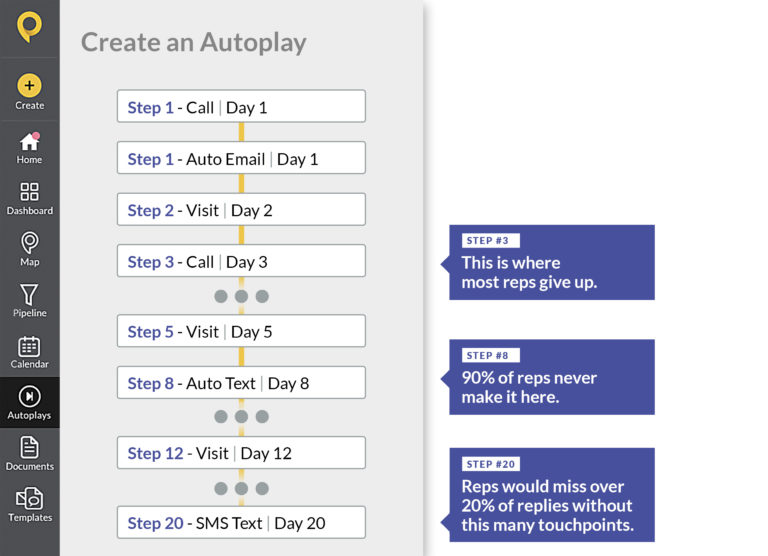
SPOTIO’s Autoplays feature will give you this ability.
Create customizable sales workflows that include the most important sales activities, like making calls, sending emails and texts, and scheduling in-person visits. Then allow reps to access these sequences on any device.
This will keep them accountable, help them remember which tasks to perform and when, and ensure that more of your prospects turn into paying customers.
Understand and plan for objections
You know that most people can benefit from solar. That won’t stop your prospects from showering you with a waterfall of objections…
- Solar is just too expensive.
- Solar panels are really hard to maintain.
- Solar will make it more difficult to sell my home.
The list goes on and on. Fortunately, these objections don’t have to slow your department down—as long as your reps understand the most common ones and the best ways to overcome them.
Follow up with leads
Did you know that 80% of sales require five or more follow-ups? If your reps don’t check in with prospects on a regular basis, they won’t close many deals.
Fortunately, following-up is easy with SPOTIO’s Autoplays (mentioned above) and similar tools. All you have to do is tell the app when you want to follow up. It will then send an email/text for you at the appropriate time, or shoot you a reminder to call/visit the prospect in question.
When your reps do follow-up, make sure they offer something of value. They can, for example, offer to answer questions or share an eBook your company just published on the benefits of solar. Ask them to limit “Just checking in” emails.
Re-canvass neighborhoods
Your team just canvassed a neighborhood. What should they do now? They should re-canvass said neighborhood after a suitable amount of time has passed.
Our research indicated that returning to neighborhoods until a 60% saturation level is reached can boost booked appointments by 25%.
This is because re-canvassing enables solar sales teams to connect with prospects they missed the first time around. It also allows prospects to become familiar with sales reps. Familiarity almost always leads to more sales.
While making second, third, and fourth passes through a neighborhood, make sure your reps name drop the people they’ve already booked appointments with and/or the folks who’ve already bought a solar system from them.
Doing so will help build trust with prospects and increase the likelihood of a sale. When it comes to selling solar panels, trust is key.
Monitor rep activity and performance
Do you know what your reps do in the field? You hope they’re talking with customers and closing deals. But how can you know this for sure? You have to closely monitor rep activity and performance, which you can do with SPOTIO.
The SPOTIO mobile app will allow you to track your reps in the field. That way you can see exactly where they go and when they go there.
This level of information will help you properly diagnose poor performance. Are your reps under performing because of a lack of effort or training? When you know the answer, you can act accordingly and improve your department.
(Note: This feature can be disabled in SPOTIO if reps feel it violates their privacy.)
You can use SPOTIO to track other rep activities, too, such as the number of emails and text messages they send, calls they make, and prospects they visit.
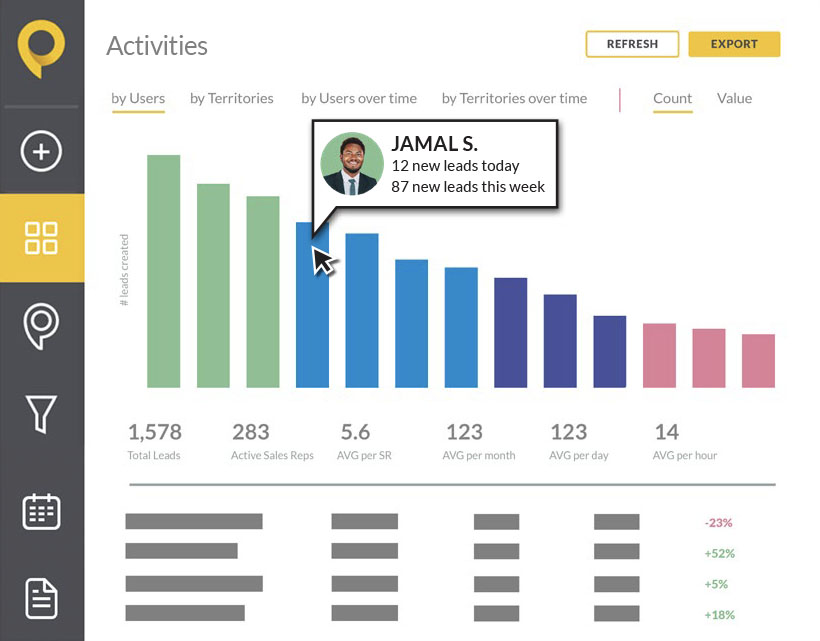
Ask for referrals
Every business wants more referrals. Why? Because they help sales teams close more deals without having to invest a ton of money into marketing.
Referrals are extra important in the solar industry, where it can cost $150 – $200 to generate an appointment-ready lead. Buy-ready leads can cost even more, often between $500 and $1,000 each. Referred leads, on the other hand, are free.
Even better, referred leads are often the highest quality leads your reps will encounter because the potential customer will already know and trust your brand.
Invest in the right technology
Last, but certainly not least, to sell solar at a consistent clip, you should invest in the right technology. We’re talking about CRM solutions, sales engagement platforms, proposal design apps, and other tools that make selling solar a lot easier.
- CRM Solutions: Customer relationship management software, CRM software for short, will help your sales team keep track of customers. It’s an essential tool for all sales teams, regardless of industry.
- Sales Engagement Platforms: A sales engagement platform does exactly what you think it would: help sales reps engage prospects. SPOTIO is the sales engagement platform that was specifically designed for field sales teams, which makes it perfect for solar sales purposes.
- Proposal Design Apps: A proposal design app will help you create custom, eye-catching proposals in a matter of minutes. This kind of tool will make your reps more productive and your company seem more professional.
Increase solar sales with SPOTIO
If you’re in the business of selling solar panels, you’re probably wondering, “How can I boost sales for my department?”
The answer is to implement the solar sales best practices we outline in this article. Once you do, you’ll be able to take advantage of the massive opportunity that the solar industry represents and shoot past your competitors.
One of the top best practices is to invest in technology solutions. CRMs, sales engagement platforms, etc. will make your reps more productive, help them appear more professional, and allow them to close more deals.
Speaking of technology, why not give SPOTIO a try today?
Thousands of solar sales reps use our app every day to connect with prospects and move them through the five stages of the solar sales funnel.
Sign up for a free demo of SPOTIO to see if it’s the right tool for your team.

